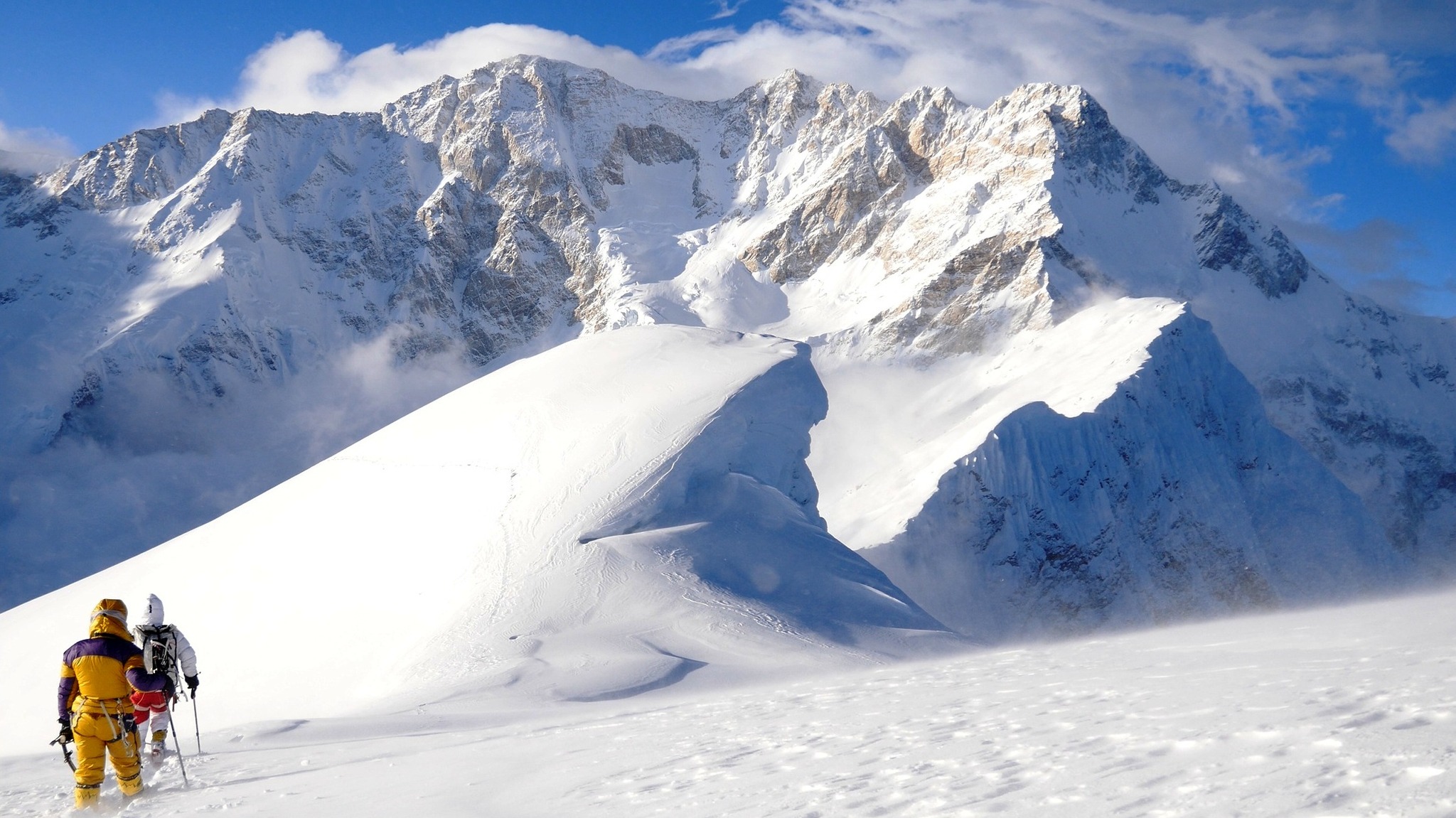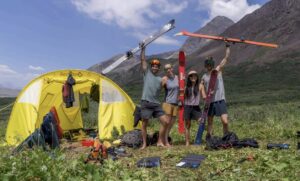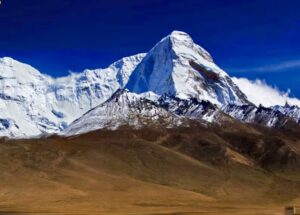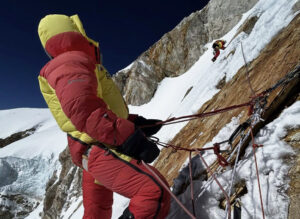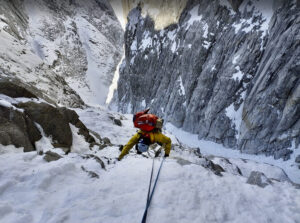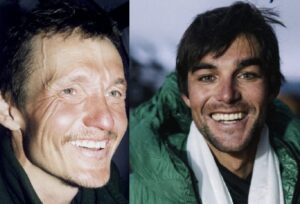Peter Hamor of Slovakia and Nives Meroi and Romano Benet of Italy have made the first ascent of the west face of 7,412m Kabru I. They waited to announce their success until after they returned home.
The style, the goal, the line, even the name they picked for the new route — graded D for moderately difficult — describes their whole approach to mountaineering. They do Himalayan trad climbing, as opposed to speed climbing or other fashionable variants of high-altitude mountaineering.

The new line up the west face of Kabru I. Photo: Peter Hamor
Unstable weather
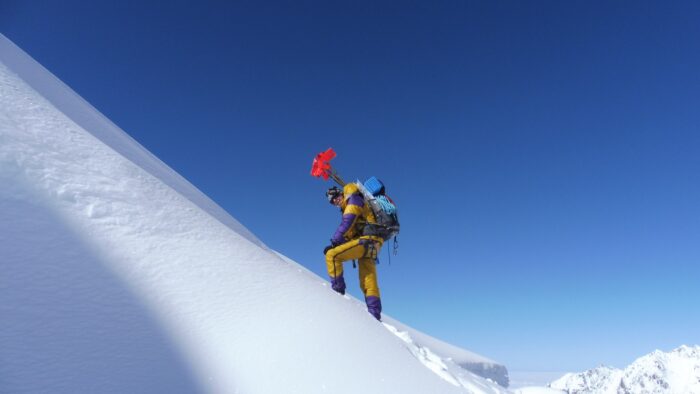
Carrying bamboo poles to mark the route. Photo: Romano Benet
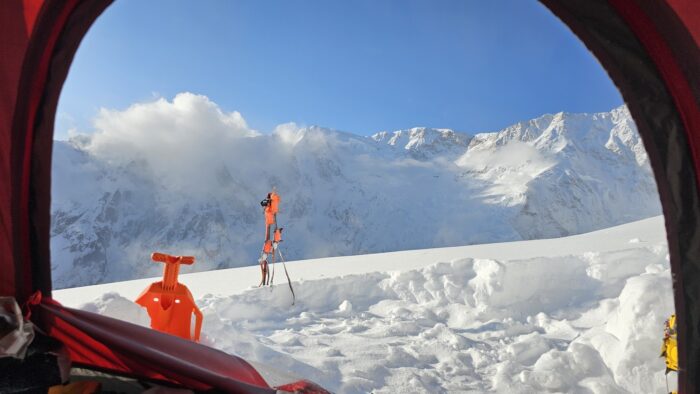
View from the bivy tent on Kabru. Photo: Romano Benet
“The weather was really unstable,” she added. “Days and days of snow, and the rest were very windy.”
Second try
They began their second attempt on May 2.
“We managed to meander through an unpleasant section full of hidden cracks and dangerous seracs to about 6,300m, where we found a relatively safe place for our bivy tent,” Hamor reported on his website.
The team progressed for one more day. Then, after a short rest in a second bivouac, they left for the summit at 1:30 am on May 4 in stable but very cold weather.
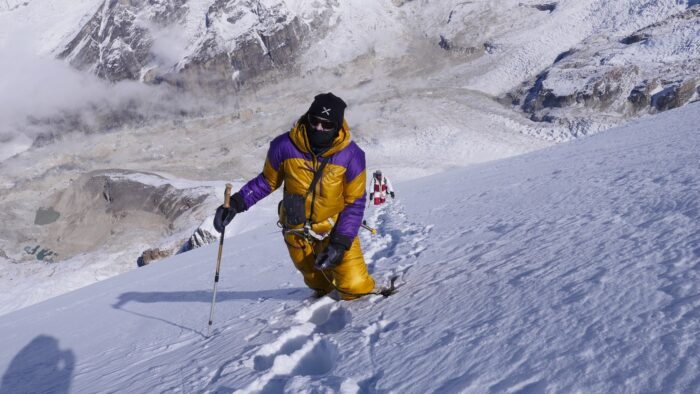
Nives Meroi on Kabru I. Photo: Romano Benet
“Sunrise caught us just below the ridge connecting Talung Peak (7,349m) and Kabru,” Hamor wrote. “At that point, the terrain was a little easier but still very dangerous due to avalanche-prone snow and huge cornices.”
Luckily, the three climbers climbed along the ridge without incident and finally reached the summit area, a short, steep section of rock and ice. They stood on top at 5:00 pm.
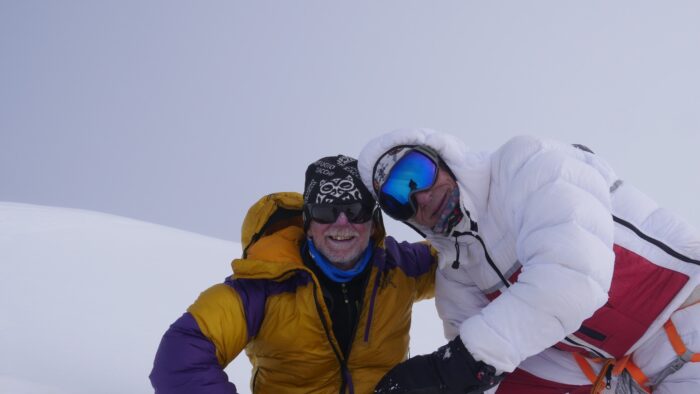
Romano Benet, left, and Peter Hamor on the summit of Kabru I. Photo: Nives Meroi
A cold descent
The climbers stayed just long enough for some quick photos and immediately started down, following their footprints in the snow even after nightfall.
“The problem was that, as we arrived at the place where we had previously bivouacked at 6,300m, we couldn’t find our tent,” said Hamor. “A night in the open in such cold conditions would certainly not be without consequences.”
It was 11 pm before they finally found their tent. They went inside, melted snow to rehydrate, and got some rest after the 22-hour day. The following morning, they continued down to base camp.
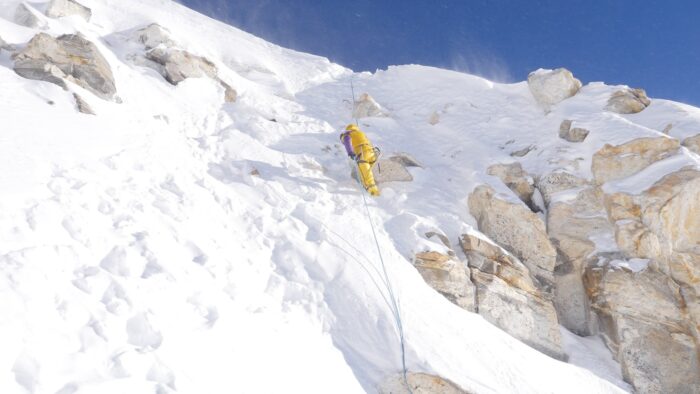
Rappelling down the ridge. Photo: Romano Benet
Trad style
“Our first ascent of the west face of Kabru was done in an easy, fair style, on our own, without the use of fixed ropes, bottled oxygen, high camps, or a helicopter, and we left nothing on the wall except a few bamboo poles,” Peter Hamor noted. They called the route simply Himalayan Trad.
Instead of seeking maximum difficulties, they followed the most logical line to the summit. Hamor said it’s only doable in the right conditions, since the avalanche risk can be very high.
“It was a pleasure to complete this beautiful, logical, long…and exhausting route,” Nives Meroi told ExplorersWeb.
She recalled, in particular, the solitude they enjoyed. It was just the three of them, climbing in real trad style.
A good area for new routes
Hamor, Meroi, and Benet were on their third visit in three years to the subsidiary peaks of the Kangchenjunga area. Their main goal was 7,590m Yalung Peak, and they had eyed Kabru I as a preparatory ascent. Two years ago, the climbers opened a new route on the nearby Kabru IV, which earned Nives Meroi a Piolet d’Or.
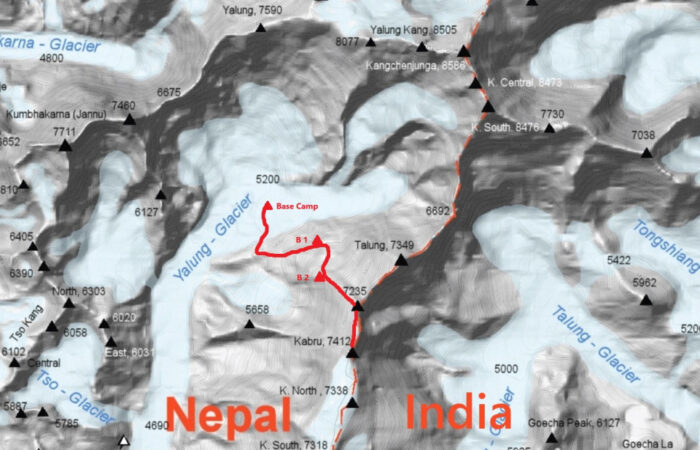
Their route, overlaid on a map of the area. Topo by Peter Hamor
The European trio was one of the few teams targeting new routes in Nepal’s peaks this spring. Earlier today, we heard from Piolet d’Or winners Yuri Koshelenko and Alexey Lonchinsky of Russia, who were also climbing near Kangchenjunga. More on their expedition in an upcoming story.
